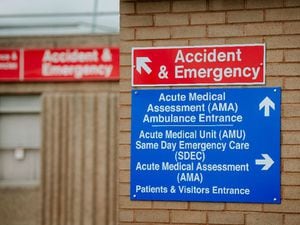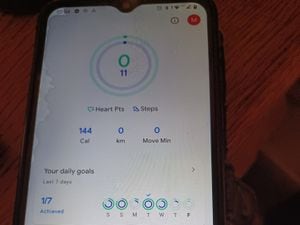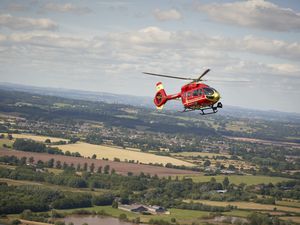39,000 Shropshire patients in four-hour A&E wait
Tens of thousands of A&E patients at Shrewsbury and Telford hospitals waited more than four hours to be seen last year, figures reveal.

Medical experts have blamed a combination of staff shortages, lack of funding, and increased demand for rising waiting times across England, and said a no-deal Brexit "would only exacerbate these pressures".
NHS data shows that A&E patients at Shrewsbury and Telford Hospital NHS Trust, which runs the Royal Shrewsbury Hospital and Princess Royal Hospital in Telford, were left waiting more than four hours on 39,652 occasions in 2018-19.
It means that 71 per cent of around 137,000 attendances were admitted, transferred or discharged within four hours of arrival – well below the NHS’s target of 95 per cent.
The proportion of patients seen within the target time at the trust has dropped significantly in recent years – the figure stood at 93 per cent in 2013-14.
The figures come as the trust's hospitals await a decision on whether they can proceed with Future Fit, a major reorganisation that would see A&E care provided at one site, Royal Shrewsbury Hospital.
The proposals, which have been met with fierce opposition from Telford & Wrekin Council and the borough's residents, are currently with the Secretary of State for Health, Matt Hancock, who will decide whether they go ahead.
The trust has argued that centralising A&E services is the only way to make them sustainable for the future.
NHS bosses recently unveiled plans to scrap the four-hour standard – introduced in 2004 – after arguing it was outdated due to the changing nature of emergency care.
Trend
It proposed replacing it with four new targets, including a focus on the most critically ill and injured, and measuring the average waiting time for all patients.
The performance of Shrewsbury and Telford Hospital NHS Trust last year reflects the trend across England – just 88 per cent of emergency attendances were seen to within four hours in 2018-19, compared to 96 per cent five years earlier.
Tim Gardner, senior policy fellow at the charity the Health Foundation, said “huge” efforts by NHS staff saw more people treated in time last year.
But he said the trend towards longer waits is likely to continue, as hospitals grapple with rising demand, a workforce crisis and continued underfunding.
He added: “A no-deal Brexit, which appears increasingly likely, would only exacerbate these pressures.
“Staffing shortages would be intensified, driving up demand for hard-pressed services, disrupting supplies of medicines and other necessities, and stretching the public finances which pay for health care.”
Dr Simon Walsh, the British Medical Association’s emergency medicine lead, said it was particularly concerning that waiting times had increased in major trauma units, where many of the most critically sick or injured patients are treated.
He described the Government’s recent spending commitment for the NHS as "disappointing", adding: "It’s clear that significantly more investment is needed across the board to turn things around, both for our hardworking staff and the communities they serve.”
A Department of Health and Social Care spokeswoman said: “We’re backing the NHS with £1.8 billion for world-class facilities to improve frontline patient care across the country, on top of our historic commitment of £33.9 billion extra taxpayers’ money every year by 2023-24 – the largest and longest cash settlement in the history of the NHS."
An NHS spokesman said A&E staff across England assessed and treated 3,400 more people within four hours every day last year compared to five years ago.
Nigel Lee, Chief Operating Officer at The Shrewsbury and Telford Hospital NHS Trust, said: “Demand on our A&Es is increasing year-on-year - last year we saw almost 140,000 visits to our two departments. We have invested in our emergency workforce – both nursing and medical – in order to meet this increasing demand, but we know we still have more to do.
“Our priority is to ensure that patients arriving at our A&Es receive the right treatment. More complex cases have more complex needs which take longer to meet, but we will not compromise on patient care.
“The challenges we face are well-known and require a long-term strategic solution. In the meantime, we continue to work hard as a Trust and with our partners in the wider health economy, to ensure the safest and most timely treatment for our patients.
“I would also like to acknowledge our staff who are working so hard to ensure our patients are treated safely and with kindness despite these very challenging conditions.”





